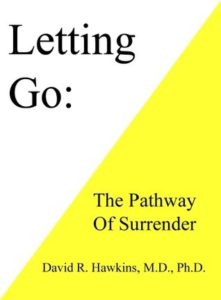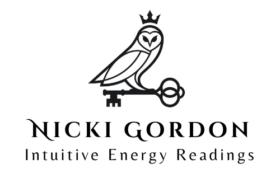-David Hawkins, Letting Go
Try sitting a moment in silence and saying to yourself: “Let Go. Surrender to life’s natural, loving, flow.”
When sitting with that statement, notice (without judgement) what feelings arise in your body. Relief? Love? Fear? Guilt?
Letting go isn’t a passivity to life. It’s not becoming a door mat.
Letting go is a shift in perception. It’s living in state of giving and receiving what is yours – in the moment. It’s living as the balanced observer of life rather than the victim. It’s not about perfection either. A part of us is still human, afterall! Yes, I do get annoyed with my kids and my husband some days. I’m just aware of when I’m doing it now. It doesn’t overtake me.
I thought of the image of a feather to describe how I’m referring to letting go. Feathers are light and free when not pinned down. Yet rather than thinking of letting go as being a stray feather, un-led or un-guided, changing course blindly with each gust of wind – I think of letting go as a beautiful feather being used as a quill, guided with purpose. Flowing and creating.
My journey into letting go has been unfolding as I do the workbook lessons in A Course In Miracles. I started this book last Fall and highly recommend it if you’re ready to take a deep dive. More on this book at a future date. I bring it up because it’s teachings led me to find this book:
 Letting Go: The Pathway of Surrender, by David Hawkins
Letting Go: The Pathway of Surrender, by David Hawkins
Let me start by saying this is not a self help book. I find I’m over people telling me what I need to do to be happier or more fulfilled. But any book that encourages inner reflection, inner guidance, and finding your own way, after a gentle nudge of insight, is worth the read.
In fact, Hawkins begins his book by stating, “Save us from the ones who have the answers! Save us from the righteous! Save us from the do-gooders! Confusion is our salvation. For the confused, there is still hope….If you are confused, you are still free.” (pg 5)
This book is about taking an unapologetic journey with yourself. It’s freeing, insightful, and not preachy.
The main idea of the book is letting go of emotions and feelings that are holding you back in life from experiencing your innate greatness and JOY. These blocks could be in relationships, wealth, health, career, spirituality, or however you choose to apply it. It is not focused specifically on one area – leaving it up to the reader to decide. I read the book from the spiritual perspective, looking at surrendering as a way to get in the flow with my Soul, Spirit, and God – yet Hawkins doesn’t address this too specifically.
It’s an invitation to go within and discover your inner stillness that’s always there. Hawkins gives droplets of insight to get you going, but the journey is yours to take.
He explains in the book:
“Letting go involves being aware of a feeling, letting it come up, staying with it, and letting it run its course without wanting to make it different or do anything about it. It means simply to let the feeling be there and to focus on letting out the energy behind it.
The first step is to allow yourself to have the feeling without resisting it, venting it, fearing it, condemning it, or moralizing about it.
It means to drop the judgement and to see that it is just a feeling. The technique is to be with the feeling and surrender all efforts to modify it in any way. Let go of wanting to resist the feeling. It is resistance that keeps the feeling going. When you give up resisting or trying to modify the feeling, it will shift to the next feeling and be accompanied by a lighter sensation. A feeling that is not resisted will disappear as the energy behind it dissipates.” (pg. 20)
He goes on to explain:
“As you begin the process, you will notice that you have fear and guilt over having feelings; there will be resistance to feelings in general. To let feelings come up, it is easier to let go of the reaction to having the feelings in the first place. A fear of fear itself is a prime example of this. Let go of the fear or guilt that you have about the feeling first, and then get into the feeling itself.” (pg. 20)
As Hawkins goes into detail on various emotions and how they play out in life and health, we come to see how our emotions are impacting and projecting into the reality we experience. Whether it’s love and peacefulness, or whether it’s fear and guilt.
To begin letting go, Hawkins states, “you have to want to be free of the feeling more than you want to keep it.” (pg. 327)
This is an important point. We must want to truly be free of a feeling in order to let it go. Is there some small thrill we are getting from feelings of jealousy or rage? Is there a feeling of control in being fearful? Is there comfort in feelings of self-loathing or apathy? It’s important to be honest, forgiving, and humorous with ourselves. Which emotions are we getting a strange, quirky kick out of feeling? Do we really want to keep them around or are we ready to move on?
Hawkins explains:
“We think that somehow, if we hang on to that feeling, it is going to get us what we want. If we get stuck in a feeling, it is useful to look at the question of what we think we have accomplished by hanging on to it. We will almost always find that we have a fantasy that it will have some effect on some other person or change their behavior or attitudes toward us. If we let go of that, we become willing to let go of the feeling.
Whereas one part of your mind would like to be free of the tension from a feeling, another part of your mind is programmed to believe that hanging on to the feeling will somehow magically bring about some desired end. Unless one is conscious and aware and has mastered the technique, the conflicts of the mind will overrule and dominate.” (pg. 328)
What happens as we let go of emotions and feelings not serving us? Our thoughts are naturally affected next. Pent up and repressed emotions are often the cause of the never ending “monkey mind” chatter. All the thousands of thoughts we have in a day can really be traced back to a few strong emotions. When we are feeling more love and joy as emotions, we then experience:

Peacefulness
Abundance
Balance
Positive insights and change
Creativity
Un-phased by small life annoyances
Life seems easier and we experience a feeling of being “in the flow”
I hope these little tidbits will pique your curiosity to read this book. If you feel a nudge – that’s your Soul telling you to give letting go a shot. In my Mind, the journey to go within and look honestly at the ego mind vs. the Expanded Mind (our True Self), is what makes life exciting. There is always more to unfold and learn about our Self. It’s like peeling an onion. When looking at life from this lens, there is no fear in life going forward, or getting another year older, or any fear-based thoughts, when we have an inner purpose: to get to know the experience of living life through the eyes and Mind of our True Self.
It’s a journey that isn’t always smooth in our human eyes, yet perfect in how it all unfolds. For instance, if this book doesn’t interest you at the moment – that’s ok. Maybe it will in 5 years. Or maybe it never will. We are led to action by something greater than ourselves – and whatever path we take to inner freedom is perfect in it’s own way for each of us.
There is no right or wrong way – but I do hope this post encourages Awareness. A Waking Up. A conscious look at ourselves and our unchanging greatness despite our human imperfections.
One more quote from Hawkins to wrap up:
“Serious spiritual work is a continuous willingness to let things go as they arise. It is the willingness to surrender wanting to control everything as it arises, the willingness to surrender wanting to change it, and to have it our way. Very often there will be illusions about the nature of Reality that also have to be let go. That there’s a good and a bad, a desirable and an undesirable; that’s all in the mind.” (pg. 334)
Happy reading!
In gratitude,
Nicki
